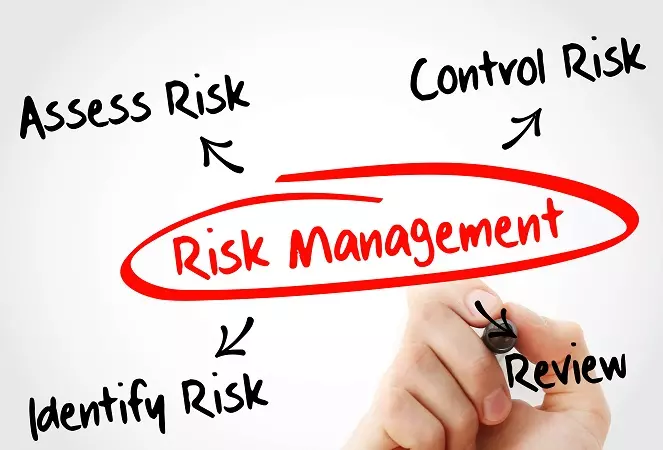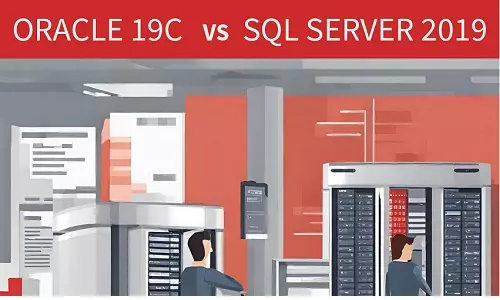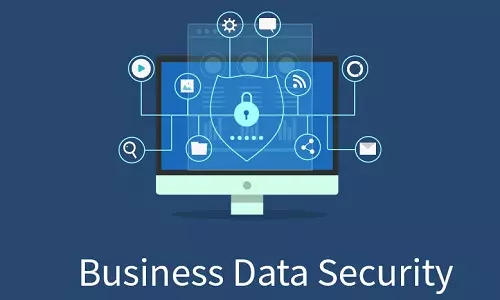Cloud Computing Project Risk Management: A Comprehensive Guide
Through the risk management process, it is possible to determine possible uncertainties that can impact the project, plan a response, implement the response, and monitor the risk. This article explores how risk management processes can be used to control risks in cloud computing projects.

Among all IT projects, Cloud computing projects are gaining popularity as individuals, businesses, organizations, and governments seek cloud solutions to issues generated by on-site (on-premises) computing systems. Cloud computing provides an alternative to traditional computing structures and systems as applications and data can be managed from an offsite computing system, securely accessible through the global internet via a web browser, secure shell (SSH) and a virtual private network (VPN). Cloud computing is relatively new hence can be a significant challenge for project managers and other project stakeholders. As many computing-intensive institutions opt for cloud computing solutions, the transition poses challenges as project stakeholders are yet to fully adopt the globally accepted project management practices.
Organizations often face both internal and external uncertainties when formulating and executing business strategies. A risk is defined as an uncertain event or condition that can positively or negatively impact an objective or a goal. In project management, risks are associated with events that can impact the scope, goals and objectives, or the deliverables either positively or negatively. It is imperative for an organization to have an in-depth understanding of the potential risks, systematically and quantitatively assess the risks, anticipate their sources and impacts on projects, and select an appropriate mitigation strategy to ensure that their likelihood of occurrence and impact is minimal. This process increases the chances of a cloud computing project succeeding. Traditionally, risks were viewed as project destroyers; however, this perspective has been reviewed and a conclusion made that project risks can be identified as either opportunities or threats. Opportunities are risks that have a positive impact on a project while threats are risks that negatively impact a project.
Project risk management is a critical success factor in project management, more so cloud computing projects. The primary objectives of an effective risk management process are to increase the probabilities of opportunities and decrease the probabilities of threats to optimize the chances of project success. Further, the fundamental goal of risk management, as carried out by a project manager, is to identify a project risk's probability and impact. By definition, a risk probability is a chance of the risk occurring, which ranges between 0% and 100%. On the other hand, the impact is the positive or negative consequences of the risk occurring. The impact of a risk is determined by its magnitude and significance, which may have varying implications on a project's scope and deliverable.
The Risk Management Life Cycle in Project Management
Notwithstanding the project differences in terms of scope, goals and objectives, and deliverables, cloud computing projects are often subject to a similar risk management cycle. The risk management life cycle is a structured approach for comprehensively viewing risks throughout a cloud computing project. This life cycle follows a series of logical phases, often iterated, including processes such as risk management planning, identifying risks, performing qualitative risks analysis, performing quantitative risk analysis, planning the risks responses, implementing risk responses, and monitoring the risks. As stated herein, the risk management life cycle can be performed once during project planning or at different predefined points in the project.
Stakeholders in Project Risk Management
Managing risks in a cloud computing project is a multifaceted undertaking that requires input from various stakeholders involved in the project. These stakeholders often comprise the project manager, project team, external consultants such as security experts, and cloud computing consultants. Often, the risk management processes are explicitly built into the project's core decision-making process to ensure that any potential risks are effectively managed. The initial risk management plan is developed illustrating how the different risk management processes are to be carried out, and how they all fit into a single framework. By involving the different stakeholders in the initial planning, there's usually a deeper understanding of the rules and guidelines defined by the culture of the organization, the capabilities of the people, and the goals and objectives of the project. The effectiveness of the risk management process depends on the decisions made during plan development as several success factors usually considered include but are not limited to the availability of resources, escalation channels, processes, tools, and techniques used, review and update frequency, and the reporting requirements.
Further, the complexity of a cloud computing project determines how defined the risk management plan would be as highly complex projects have a higher probability of failure if the risks are not properly addressed. To fully understand the complexity of a project, project requirements help determine the cost and duration of the project. A cloud computing project is mostly associated with structural and technical complexities that should be factored in the risk management processes. Once the stakeholders have an agreed-upon plan, the risks are identified, recorded, and the owners identified. A risk owner is tasked with implementing an appropriate response and monitoring its progress. It is a common occurrence for certain risks to be unidentifiable during the initial phases; hence the emphasis on an iterative risk identification process.
The unfamiliarity of cloud computing projects makes each risk management process unique, requiring extra attention. The identified risks can be categorized as mostly technical and management and control. Technical risks include inadequate user documentation and training, applications not fit for the purpose, poor system performance, technological limitations, project budget and schedule, lack of user acceptance, and inappropriate user interface, among others. Early and comprehensive identification of the risks increases the probability of completing a cloud computing project. A risk register is a document used to capture details of the identified individual risks. In addition to the individual risks, a risk register can include extensive details including the potential risk owners and a list of potential risk responses.
Qualitative and Quantitative Risk Analyses
Qualitative and quantitative risk analyses are performed on each iteration of the risk management process. The qualitative risk analysis primarily focuses on the likelihood of occurrence, degree of impact on the project's goals and objectives . On the other hand, quantitative risk analysis provides numerical data on the combined effect of the identified individual project risks on the overall objectives of the cloud computing project. Although the quantitative risk analysis process is not common in less complex projects, the magnitude and sophistication of a full-scale cloud computing project requires this process for better and accurately developing the appropriate risk responses. Although qualitative and quantitative risk analyses are crucial, the data input for analysis should be of higher quality, credible and unbiased.
Project Risk Responses: Risk Response Plan
An effective risk management process includes an elaborate risk response plan. Risk responses are actions that are appropriate for an individual risk or the overall project risk. Risk responses often follow a comprehensive evaluation of the risks to determine not only their characteristics in terms of likelihood of occurrence and degree of impact but also on their priorities and ranks based on these characteristics. Once a risk is prioritized, an appropriate response is developed depending on the nature of the risks; whether is a threat or an opportunity. Project management has five main alternatives for dealing with threats including escalate, avoid, transfer, mitigate, and accept. Further, there are five responses to be considered when dealing with an opportunity. These options include escalating, exploiting, sharing, enhancing, and accepting.
Types of Risk Responses
The appropriateness of a response is dependent on the possibility of providing the highest chance of success while complying with applicable constraints and project issues. Every risk previously identified should have a proper response that should then be implemented to reduce the chances of project failure.
1. Risk escalation is most appropriate when a risk is considered to be outside the scope of a cloud computing project. The project manager is often tasked with communicating the risk to the stakeholder whose objectives match those that would be affected if the risk occurred.
2. Risk avoidance is a response that aims to eliminate a threat from occurring. Cloud computing projects are often faced with a high-priority threat of selecting a vendor whose structural provisions do not fulfill a project's requirements. This risk is better avoided by assigning more resources including budget and time to the vendor selection process and consulting with the relevant cloud solutions experts.
3. Risk transfer is another risk response that aims to transfer a risk liability to another party or stakeholder. In a cloud computing project, warranties should be signed between the project manager and other stakeholders, such as suppliers and cloud solutions vendors, to ensure the goods or services provided meets the minimum features required for the deliverable.
4. Risk mitigation is often selected as a response to reduce the probability of occurrence or the degree of impact. By creating a redundant system to hold applications and data, the risk involving loss of data and applications during transfer and delays or failures in setting up the cloud application for use by the client is significantly reduced.
5. Risk acceptance acknowledges the existence of the risks but takes no proactive action. Most of the risks requiring this response are often of low priority whose likelihood of occurrence is not only low but their degree of impact on the objectives and the overall project is low.
Just as it is in the case of threats, a positive threat can be escalated if the project manager does not have the authority to act on it. Although escalated risks are not monitored, they are often recorded for documentation and reference purposes. When a high-priority opportunity is required to be realized, an exploit response ensures that its probability of occurrence significantly increases towards 100%. Further, risk-sharing ensures a risk is transferred to another party so that he or she can share in the opportunity. Enhancing risks is a response that is aimed at increasing the probability of a risk occurring or magnifying its impact. One of the simplest ways to enhance an opportunity is to target a success factor such as finishing tasks early and adding more resources to the identified tasks. An opportunity is often accepted by acknowledging its existence but not taking any proactive action. As stated herein, an accepted response is often suitable for risks that are a low likelihood of occurrence and a low degree of impact.
Implementing Risk Responses
The risk responses implementation process involves executing the agreed-upon responses for each individual risk and in a planned order. The fundamental goal for this process is to address the overall project risk exposure, minimize project threats, and maximize project opportunities. One key success factor in effective risk management is to be proactive in addressing the identified risks. By implementing the risk responses, the various threats identified in a cloud computing project can be addressed ensuring the highest chances of successfully completing the project. In addition, the project's opportunities must be actualized during this phase to improve the chances of realizing the project's goals and objectives. Furthermore, risks can contribute significantly to the project's failure at this level. A comprehensive planning, identification, and evaluation of potential risks notwithstanding, poor implementation and execution of risk responses will negatively impact the project's goals and objectives, scope, and the deliverable. The different risk owners including cloud computing consultants, vendors, applications and networks teams, and other stakeholders should actively engage each other, through effective communication channels and commit to implementing the responses as planned.
Once the responses have been implemented, the risks should then be monitored, tracked, and new risks identified. A risk owner is often tasked with monitoring a risk against the corresponding set of trigger conditions as defined and specified in a risk register. Similarly, the risk management process's effectiveness should be constantly evaluated and changes made where necessary. This process is most viable when an iterative risk management process has been adopted in a cloud computing project. Further, the periodical review of the risk management process provides critical lessons for not only subsequent iterations but also future projects sharing a similar scope and deliverables. A risk audit is a comprehensive report that is used to consider the effectiveness of the risk management process.
Documentation in Risk Management Life Cycle
Documentation is a crucial success factor in project management. Project documentation acts as both the input and output for various activities in a project development cycle. Furthermore, proper documentation is considered a prerequisite in an effective risk management life cycle. Well-written documentation not only demonstrates a project organization's quality risk management practices but also provides an inventory for constant review and evaluation.
The Risk Management Plan
The foundational document of the risk management process is the risk management plan. This document describes how the various processes and activities of the risk management life cycle will be structured and performed. Among the elements included in the risk management plan are the risk strategy, the methodology including the specific approaches, tools, and data sources for risk management, roles and responsibilities, timing, and risk categories.Further, a comprehensive definition of the risk probabilities and impacts levels, which are specific to the cloud computing context and reflect the risk appetite and the thresholds helps in developing risk priorities.
The Risk Register and Risk Report
Further, as stated herein, a risk register is a fundamental document for the risk management process. Further, a risk report captures information on the sources of overall project risk and detailed information on the identified individual risks. During the planning and implementation of risk responses, a response strategy may trigger a change in the cost and schedule baselines. Any change requests should be taken through a formal change control process for review and disposition, and thereafter documented. These documents are a key input in the audit process, whose main goal is to determine the effectiveness of the risk management process throughout the cloud computing project. Further, these documents should be bundled together with other project management documents and handed to the project's client during the project's closing phase.
In Conclusion...
Businesses and organizations are actively seeking cloud computing solutions for their data and applications, which have led to the rise of cloud computing projects within the Information Technology (IT) industry. Cloud computing projects are faced with many different risks that can be categorized as technological, managerial, economic, and legal, among others. The traditional perception of risks as destroyers of project values has been turned around and there is an appreciation of uncertainties that positively impact a project. These risks are often identified as threats or opportunities to the project, either as a whole or to unique project's goals and objectives. A comprehensive risk management process helps address the different identified individual risks, to increase the chances of successfully completing a project. The success of a cloud computing project is not only determined by the deliverable but also by the reviewing and evaluation of the risk management process's report.







